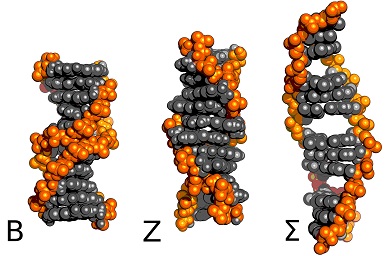Computational Molecular Biophysics
Principal Investigator: Dr. Josh BERRYMAN
Our bodies are home to a variety of molecular machines, single molecules from tens of atoms (e.g. a peptide hormone) up to billions of atoms (e.g. a chromosome). These machines are soft and flexible, often acting with some element of randomness, but they obey the same laws of physics that apply to everything else. The work of our group is to construct in-silico models of molecular systems in order to analyse and predict their behaviour. Our particular studies are the mechanics and interactions of peptides and DNA.
The assembly of peptides into mesoscopic aggregates is very relevant to diseases, particularly to the amyloid family of neurodegenerative diseases, however this process is very versatile and can result in materials with a wide range of positive properties, even starting from the same ingredients. Peptides can assemble to make biocompatible fibres as strong as silk, as well as membranes, micelles and antimicrobial gels.
The mechanical properties of DNA are related to its function in the cell. DNA is stretched, twisted, folded, unzipped and generally manipulated in the course of storing and sharing genetic information. The details of these processes are very hard to observe directly, hence computer models are of particular use to understand this charismatic molecule in action.



